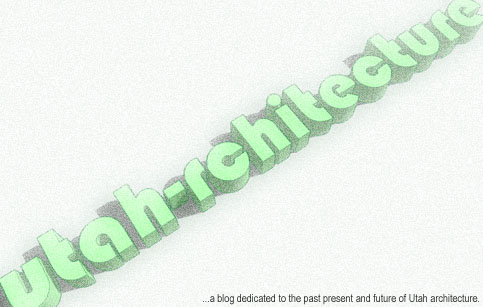The blank slate mentality inherent in the development plan echoes Post-War urban renewal in which American cities permanently lost historic neighborhoods under the guise of progress. In efforts to enliven downtown the authors of the City Creek development propose removing key elements of the city's historic architectural affluency. Of those, the historic 1919 First Security Bank Building exudes a rich architectural diversity to the relatively limited building stock present downtown and should be listed on the National Register of Historic Places, but is not, which makes its loss easier to bear and easier to propose. The developers contend that renovation of the structurally unsound First Security Bank Building is not feasible. However, seismic and structural incapacities did not preclude the renovation of the Tabernacle on Temple Square, the Salt Lake City and County Building or the Utah State Capitol.
Ironically, the City Creek development is urban re-renewal of an area which endured renewal in the 1960s and 1970s amid unrealized promises of downtown revitalization. The architectural losses were mollified in preserving two historic building facades on the blank walls of the Crossroads Plaza and ZCMI Center malls affronting Main Street. When one considers the many historic buildings demolished in the name of progress during that architectural wipe, the extant facades magnify the loss and deepen the regret. The City Creek developers hinted at plans to save the historic ZCMI façade on Main Street as well as the First Security Bank building façade from demolition, referred to as façade-ectomies in the field of preservation, although details were both tentative and scant. Once again we are falling for the same assuaging arguments which have little to do with preservation, akin to putting band aids on fatal wounds.
William Taubman, chief operating officer of the retail developer Taubman Centers Inc., said the historic buildings aren't functional and "Communities never stand still. We're not a Victorian painting." Taubman is accurate, cities are a dynamic phenomenon, but change should come incrementally and respect the architectural context which defines its place. The developers accurately perceive preservation of the historic First Security Bank building as non-functional given its poor adaptability as an office space, but it would be an ideal mixed-use residential tower. What makes architectural preservation feasible is the vibrancy and economic viability imparted to communities, not to mention the heightened interest and intrigue the architecture lends to the creation of place. The City Creek development would evolve into an architecturally and financially more successful project if the First Security Bank Building became an important historic anchor.
Jane Jacobs, the perpetually au courant urban planning authority, reacted to Post-war renewal by stating in her seminal work The Death and Life of Great American Cities that:
"The economic value of new buildings is replaceable in cities. It is replaceable by the spending of more construction money. But the economic value of old buildings is irreplaceable at will. It was created by time. This economic requisite for diversity is a requisite that vital city neighborhoods can only inherit, and then sustain over the years."
Perhaps the euphemism "downtown rising" is more palatable than the equally valid title "downtown falling." I suppose it's the same argument one succumbs to when confronting a half glass of water, yet which title aptly evokes optimism is ambiguous. I agree with Jane Jacobs' summation though, "New ideas must use old buildings."
© 2010 Steven D. Cornell
